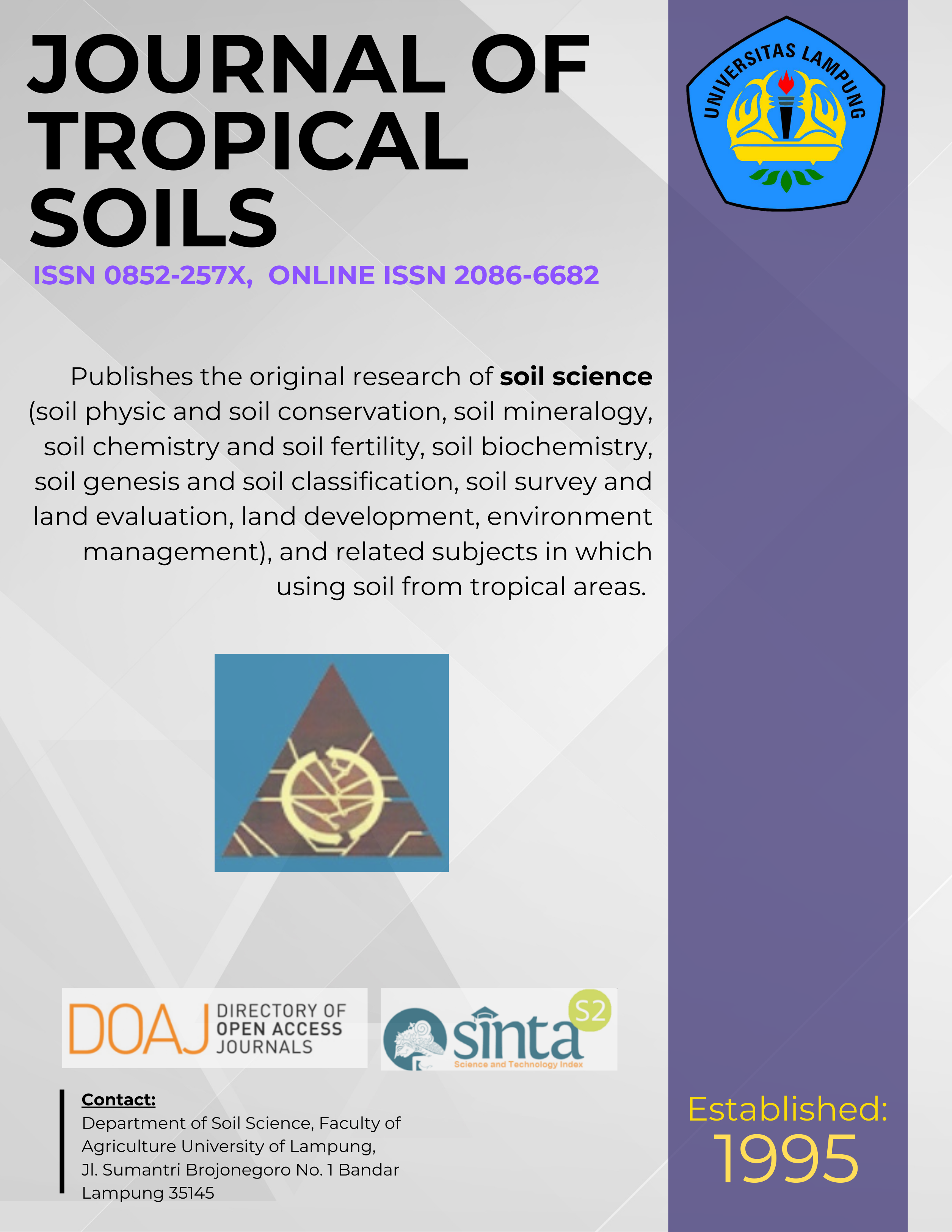Relationship between Soil Health Assessment and the Growth of Lettuce
Main Article Content
Abstract
Soil health is very important point for plant growth which is measured by several indicators. The purposes of the research were to assess and to classify soil health Padang Betuah area of Bengkulu, and to compare between soil health indicators and lettuce plant performance indicators. Soils, consist of mineral and peat soils, were sampled using a soil random sampling technique. Lettuce plants were grown in polybags using sample soils. Both lettuce performance and soil health were assessed by calculating the percentage of total scores of lettuce plant or soil performance indicators which derived from variables observed. Soil variables for field evaluation included color, moisture content, texture, structure, compaction, land slope, organic matter, pH, amount of earthworm, erosion level, LCC (Legume Cover Crop), and vegetation performance. Soil variables for laboratory evaluation were pH, electrical conductivity (EC), total Carbon and Nitrogen, available-Posphorus, cation exchangeable capacity, base
saturation, and aluminum saturation. While, the variables for lettuce growth performance included plant height, numbers of leaf, degree of leaf greenness, plant fresh weight, and relative percentage of shoot : root ratio. The results of field and laboratory evaluation showed that soil health were categoried as a healthy soil and moderate healthy soil both for mineral and peat soils, respectively. Furthermore, similar categories were also obtained for evaluation of plant performance categories. No correlation was found between the soil performance indicator
category and the lettuce performance category.
Keywords: Field indicator, laboratory indicator, lettuce growth indicator, soil health
Downloads
Article Details
Section
License for Authors
Authors who publish with this journal agree to the following terms:
- Authors retain copyright and grant the journal right of first publication with the work simultaneously licensed under a Creative Commons Attribution License that allows others to share the work with an acknowledgement of the work's authorship and initial publication in this journal.
- Authors are able to enter into separate, additional contractual arrangements for the non-exclusive distribution of the journal's published version of the work (e.g., post it to an institutional repository or publish it in a book), with an acknowledgement of its initial publication in this journal.
- Authors are permitted and encouraged to post their work online (e.g., in institutional repositories or on their website) prior to and during the submission process, as it can lead to productive exchanges, as well as earlier and greater citation of published work (See The Effect of Open Access).
License for Regular Users
Other regular users who want to cite, distribute, remix, tweak, and build upon author’s works, even for commercial purposes, should acknowledge the work’s authorship and initial publication in this journal, licensed under a Creative Commons Attribution License.

